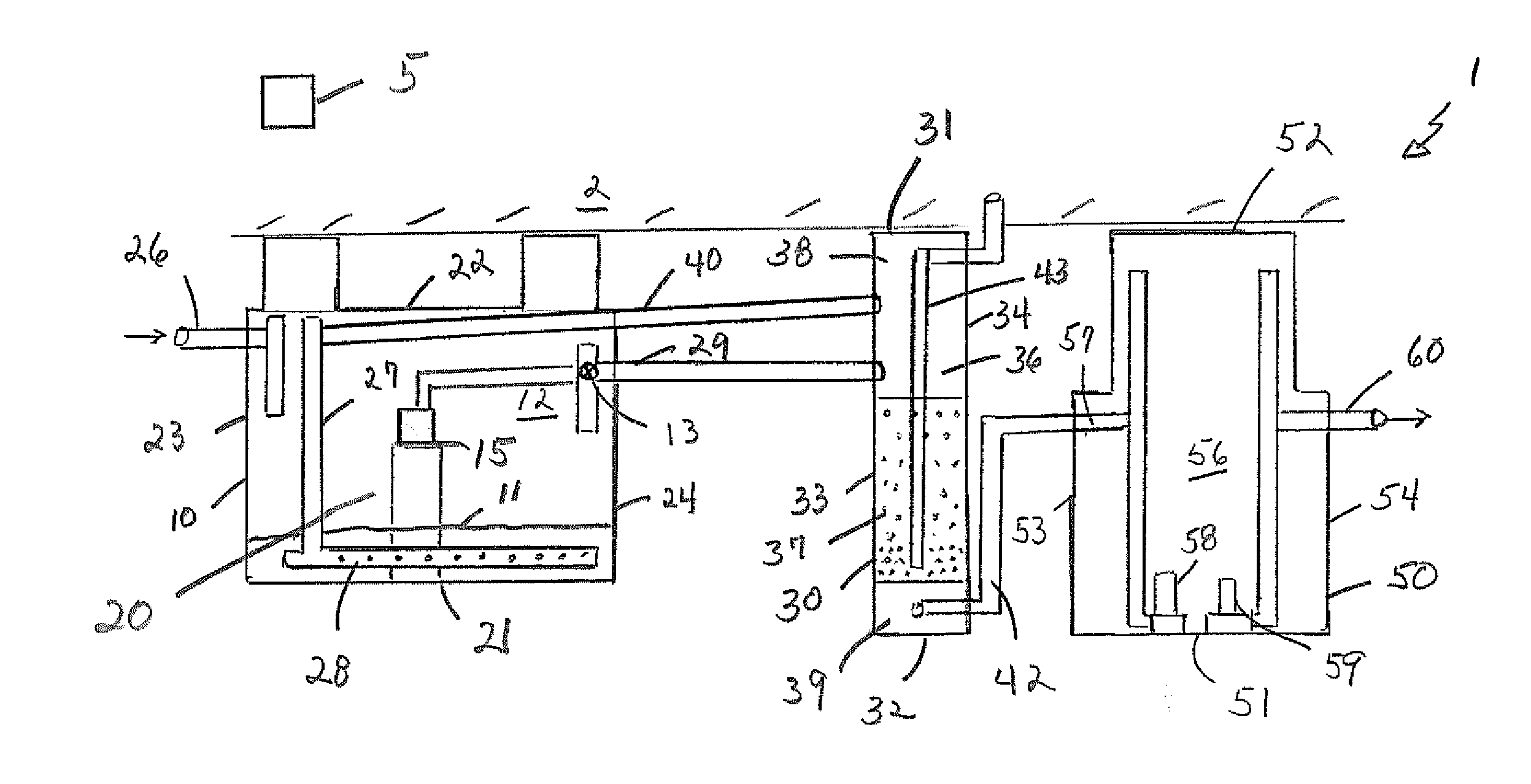Biological nitrogen removal feed process
a feed process and biological technology, applied in sustainable biological treatment, biological water/sewage treatment, water treatment parameter control, etc., can solve the problems of matter removal, prior art biological reactor processes do not control the flow through the reactor, and the process of biological nitrogen removal is multi-step and complex. achieve the effect of improving nitrogen removal and denitrification
- Summary
- Abstract
- Description
- Claims
- Application Information
AI Technical Summary
Benefits of technology
Problems solved by technology
Method used
Image
Examples
Embodiment Construction
[0012]Referring to the drawings in detail wherein like elements are indicated by like numerals, there are shown a process flow for a typical wastewater treatment system 1, and the invention process installed in the anoxic tank portion of the wastewater treatment system 1.
[0013]The wastewater treatment system 1 has an anoxic tank 10 outputting to a biological reactor 30 and outputting from the reactor to a clear well 50. The anoxic tank 10, often a septic tank, typically provides primary treatment for wastewater. The anoxic tank 10 has a bottom 21, top 22, an input wall 23, an output wall 24 and two side walls 25 interconnecting the input and out put walls, said bottom, top, input wall, output wall and side walls defining an anoxic tank interior 20. The anoxic tank input 23 has a raw wastewater input pipe 26 connecting an external raw wastewater source with the anoxic tank interior 20. The input pipe 26 is located near to the anoxic tank top 22. The anoxic tank output wall has an out...
PUM
 Login to View More
Login to View More Abstract
Description
Claims
Application Information
 Login to View More
Login to View More - R&D
- Intellectual Property
- Life Sciences
- Materials
- Tech Scout
- Unparalleled Data Quality
- Higher Quality Content
- 60% Fewer Hallucinations
Browse by: Latest US Patents, China's latest patents, Technical Efficacy Thesaurus, Application Domain, Technology Topic, Popular Technical Reports.
© 2025 PatSnap. All rights reserved.Legal|Privacy policy|Modern Slavery Act Transparency Statement|Sitemap|About US| Contact US: help@patsnap.com


